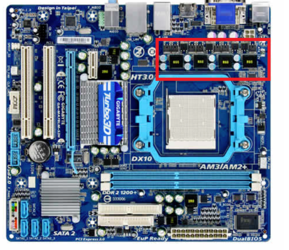- Joined
- Feb 26, 2013
- Location
- Glasgow, Scotland, UK
Hey Guys,
Right, straight off the bat let me thank you for reading this and trying to help. I have never overclocked before and I know nothing on the subject. I will be learning through tonight and the weekend.
I'm looking to overclock because my system is really weak.
So, here's the deal. My system specs are as follows:
AMD Athlon II X3 425 2700Mhz Triple Core with Quad Core architecture.
Gigabyte GA-MA78LM-S2H Motherboard.
GeForce GTX 550Ti 1Gb Professionally Overclocked.
2 x 2GB DDR2 1066Mhz
I would like to alter the overclocking of my graphics card at some point, but I'm focusing on my processor right now.
A big thanks again for any help that can be given, and have a great day.

Right, straight off the bat let me thank you for reading this and trying to help. I have never overclocked before and I know nothing on the subject. I will be learning through tonight and the weekend.
I'm looking to overclock because my system is really weak.
So, here's the deal. My system specs are as follows:
AMD Athlon II X3 425 2700Mhz Triple Core with Quad Core architecture.
Gigabyte GA-MA78LM-S2H Motherboard.
GeForce GTX 550Ti 1Gb Professionally Overclocked.
2 x 2GB DDR2 1066Mhz
I would like to alter the overclocking of my graphics card at some point, but I'm focusing on my processor right now.
A big thanks again for any help that can be given, and have a great day.
















